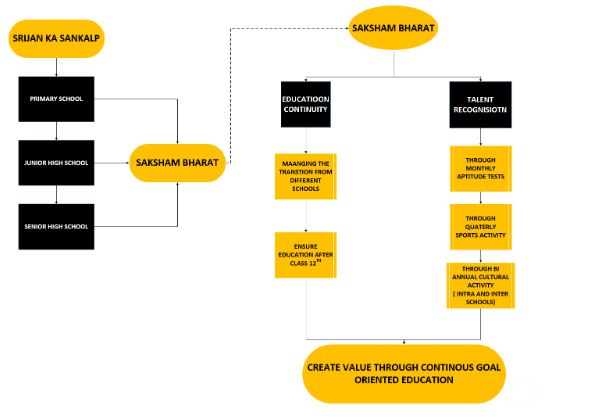In any field of human activity, quantity and quality are equally important. The same is applicable in the field of education. 504 universities and 25,951 collages in 2009 did not give any indication of catering to the growing needs of higher education (India, Government of India, Ministry of Human Resource, 2015). In the 11th Five Year Plan during the period 2007-12, 1500 more Universities are suggested by National Knowledge Commission (NKC). So, numerical growth is taking place with rapid pace, but the quality aspect of education is not yet thought out seriously. Due to lack of adequate infrastructure in terms of faculty, library and equipment in computer laboratories, the quality in the higher education is facing several barriers.
When it comes to look for employment, what are young people trained in the current shabby manner going to find? How are they going to cover the learning deficits that have accumulated over the years of attending low-quality rural schools?
With the secular decline of the rural economy, the belief has gained ground that education will be the road out of a scrimped and precarious livelihood on the farm. Inspired by this hope, rural children have flocked to schools. Most of them are first-generation learners. It’s a huge social experiment in which rural parents across the land have invested heavily, letting their children study well beyond the age when they had themselves joined the workforce.
Soon, however, this younger generation will be graduating from high schools and colleges—and then they will find that there are very few good jobs. It’s a calamity waiting to happen, a cliff from which many will fall.
Raising the quality of education in rural schools is essential, and a nationwide dialogue is necessary for charting the way ahead. Business-as-usual will not fix the problem. Privatizing the government system is not a viable solution, either. The market for education performs poorly in situations where information flows are sparse and competition is limited. Rural private schools perform no better than rural public schools in terms of learning outcomes.
The essential problem is one of a broken governance systems. There are few rewards for being a good teacher and few punishments for being a careless one. That is because of faulty designs which need to be repaired or replaced with more effective and accountable governance systems.
What is currently a highly regimented and top-down system in India needs to give way to another in which teachers are innovative in the classroom and parents are involved as co-decision-makers. Noteworthy smaller-scale innovations developed by state governments and non-government organizations provide indication of the larger potential of societal innovation. These reform efforts should serve as the starting points for a broader and increasingly essential public conversation.
And this is exactly what we are targeting to solve with our project “Saksham Bharat” .
Our Approach:

